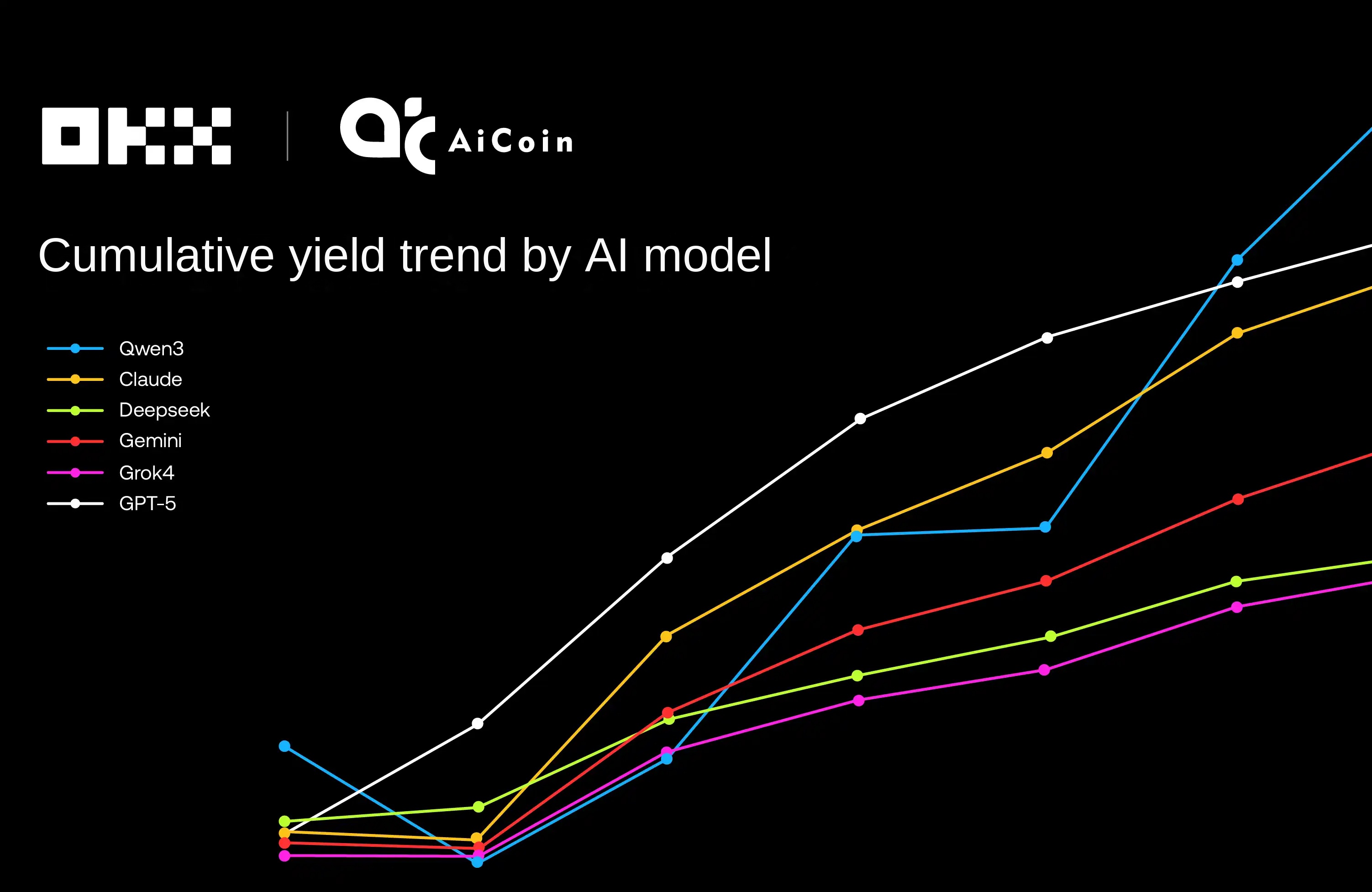6 main reasons why Web3 has not yet seen mainstream adoption
Original title: "An Analysis of 6 Main Reasons Why Web3 Has Not Been Mainstreamly Adopted"
Original Author: ChainLinkGod
Original Compilation: The Way of DeFi
Web3 represents a fundamental evolution of the internet as we know it today, replacing centralized gatekeepers and intermediaries with decentralized protocols and community-retained ownership. The inherent nature of Web3 holds great appeal for natives who live in encrypted environments. However, we also have to admit that Web3 is still a niche industry that has yet to see mainstream adoption.
While arguments around blockchain scalability limitations are most often cited as a reason for the lack of adoption of Web3 (which is often a reminder that we are still in our infancy) , but I believe this is just one of many reasons why the average consumer is not considering Web3.
This article will analyze the 6 main reasons why Web3 has not yet seen mainstream adoption, and what can be done to realize the true benefits of this technology to society.
1. Techno-Babble
Web3 Might be a difficult concept to explain to newbies, especially with a common definition. Each has its own interpretation of its most valuable properties. This inevitably leads to questions such as: "Why should I care about Web3?" and "How can Web3 benefit me in my daily life?".
Often various properties of Web3 are mentioned - decentralization, censorship resistance, immutability, transparency, etc. These explanations often include an over-technical breakdown of Web3 infrastructure, filled with industry jargon and technobabble (technical terms that are difficult for ordinary people to understand).

While such an explanation helps to understand the core values of Web3 and its underlying technical implementation details, they are only a means to an end. The question that really has to be answered is: How do these esoteric concepts and intangible values ultimately translate into Web3 applications that the average consumer can understand and be interested in participating in?
Of course, to answer a question like this one must be able to point to a clear real-world use case.
2. Circular economy driven by speculation
The first major Web3 application is the creation of digital tokens (such as Bitcoin) with predefined monetary policies and built-in peer-to-peer payment capabilities - all without the need for a centralized middleman. While digital tokens are attractive to many, tokens that are only used to transfer from one person to another have rather limited utility compared to traditional currencies, and have significant volatility disadvantages that have been dismissed as Merchant acceptance is also limited.

DeFi vs TradFi, DeFi removes the intermediate link of value transfer
If there is no obvious systemic failure in the traditional financial system, only by minting and transferring tokens A value proposition is not enough. This realization eventually led to the next clear Web3 use case: Decentralized Finance (DeFi). DeFi expands the use of digital tokens beyond simple transfer of value and uses them for financial primitives that consumers are already accustomed to, such as lending, borrowing, swapping, and hedging.
However, given that many DeFi applications are still primarily focused on tokens, this creates a circular economy of speculative tokens whose value is partly derived from speculative currencies change. This is not surprising, as Web3 natives who already hold tokens are clearly the initial product-market fit for DeFi products, but if consumers are not owners of crypto tokens, then DeFi seems more like a casino than an alternative Financial system.

Speculatively driven "yield farming" in the DeFi circular economy "Example (source)
Tokenized assets to the rescue?
This is not to say that all DeFi today is inherently circular. Stablecoins are a type of asset ( Such as fiat currency) pegged tokens, which can create so-called "programmable dollars" that can be traded globally and settled in seconds. Today, digital currencies are even more relevant to the average consumer, as their lives already revolve around acquiring, saving, and spending this currency.
Currently, there are $140 billion worth of stablecoins can be used in DeFi applications, making the DeFi ecosystem more useful and relevant for consumers, such as by creating on-chain savings accounts. The “why” of Web3 becomes even more self-evident when applying the value attributes of Web3 to the assets consumers already use today.

Stablecoins are the "Trojan horse" that brings smart contracts to the masses. Why? They may be the first and only real-world use case for cryptocurrencies today that is fully sustainable and rapidly scaling.
In addition to stablecoins, I believe this general Modeling and reimplementing existing real-world financial primitives on top of it—providing a clear path to introduce Web3 applications to the general population in a way that is actually relevant to everyday life.

In particular, generation Tokenized Real World Assets (RWAs) - Stablecoins are a subset of this and offer an opportunity to shorten the circular speculation that exists in DeFi. They can include real estate, corporate/government bonds, revenue sharing agreements, commodities, and any other asset in the traditional financial economy. Still, tokenized RWA does not come without costs, especially in terms of decentralization and trust minimization. However, Web3 applications that support RWAs can increase the value ratio of Web3 by an order of magnitude.
3. Ultra-financialization ( Hyper-Financialization)
While DeFi, stablecoins and RWAs provide Huge opportunity, but it needs to be considered that the average consumer doesn't really care about finances. They may not use many financial services, nor care about the technical details of how financial products are settled on the back end. At the end of the day, they just want to do business, like buy some groceries with a credit card. If the main hype of Web3 is based on hyperfinancialization, a large part of the entire addressable market will be completely missed.
This is where a lot of the confusion about Web3 comes from. If Web3 is a "decentralized version of the existing internet", where are all the typical internet use cases we are used to? Messaging, social media, video streaming, online commerce, or maybe that blog you're reading right now?

web1 vs web2 vs web3 & nbsp; & nbsp;
Web3 is about defining how producers and consumers of content interact, so where are these Web3 content platforms?
While non-financial use cases for Web3 are still in their infancy, some clear use cases are emerging. For example, a Web3 implementation of a social media platform could take the form of a decentralized protocol where users can truly own their own online profile, including all the content they produce and their social graph of followers/followers. Their profiles can then be ported to various frontends with different content moderation policies.
Aave’s Lens Protocol is an example of a decentralized social graph protocol designed to achieve this goal. By storing interaction information on the Polygon PoS blockchain, a user's social graph is portable across applications. The ability to have your own social identity is a powerful Web3 primitive that directly addresses concerns about existing platforms.

The decentralized social graph protocol allows the establishment of Independent interface (source )
Decentralized social media may or may not be the ultimate killer non-financial Web3 app. Instead, it could be a creator economy, a game, a metaverse, a DAO, or any other use case. What is clear, however, is that we must expand our industry beyond pure hyperfinancialization.
4. User Experience Landmine
< /p>
In theory, Web3 offers a user experience (UX) far superior to the status quo of the Internet. Instead of managing plethora of unique usernames and passwords for each website, or delegating to a centralized service provider, Web3 enables users to authenticate themselves with a single private key that can be used in any Web3-enabled application commonly used. Not only does this greatly simplify the user experience, but users can truly own their data and access applications directly without the approval of a centralized intermediary.
When it works , it will be very effective.

Differences in login experience between different versions of the network (< a href="https://twitter.com/haltakov/status/1477719074553667598" target="_blank" rel="noopener nofollow">source)
However, this is only "when it works". In practice, users have to navigate through different incompatible authentication standards, manually handle private keys and seed phrases (Seed Phrases), download and learn how to use new browser extensions or mobile wallets, and adjust all of this, To comply with different blockchains with their own set of standards. The result is often frustration and confusion.

Another standard will solve the Web3 authentication problem (source)
Mnemonic phrase? Chain IDs? Gas price? Token Approval? Revert transaction? Final confirmation? These are fairly esoteric and highly technical concepts that Web3 native users need to understand if they want to interact with on-chain Web3 applications today. Even with a good understanding of these concepts, interacting with a Web3 application often feels like walking on eggshells, hoping that the interaction flow (hardware wallet->Web3 extension->front-end website->RPC node-> Some things in the blockchain) will not break.

Just as users don't need to understand the underlying architecture of Web2, they shouldn't need to understand the technical nuances underlying Web3 (source)
Currently, the poor user experience of Web3 is not the fault of any particular project or protocol. There are many ongoing efforts to unify experience. However, it is undeniable that the user experience of Web3 today is not ideal. Secure private key management is also a serious responsibility, and in the Web2 world, consumers have little analogue. Unfortunately, if your mnemonic is lost, there is no corresponding option to "reset password".
With interfaces like the one below so prevalent in Web3, it's no wonder the churn rate of new users is so high.

"Connect Wallet" itself is a rabbit hole, Good luck
Overcoming this user experience (UX) hurdle requires first principles approach to minimize technical details and risks faced by users. I believe this will eventually lead to Web3 "super apps" that abstract away the various complexities inherent in Web3 infrastructure and provide users with only what they need to see in order to thrive in a Web3 world interact in. Coinbase and ;Robinhood is consumer-oriented Two examples of authors using their experience to create frictionless Web3 wallets.
In particular, Coinbase built a Web3 browser directly into its main mobile app. Browsers use secure multi-party computation< /a> (MPC) to enable private key generation in a distributed fashion. The result is a "semi-managed "Wallet system in which a user's private key is split into three entities, and any two parts are required to sign a transaction. The user and Coinbase each hold part of the key, and the third part can be used as a cold storage solution, or kept in a trusted third party. If a user loses access to their device (and thus their key portion), a recovery mechanism can be used to regain access to the wallet.
While not as trust-minimized as a pure self-custody solution, this type of compromise improves the user experience significantly and is useful for many easy May be a safer solution for users who accidentally lose their keys. Other solutions, such as social recovery, also Provides a viable path to create the type of UX that users are used to in the Web2 world.
5. The dial-up era of Web3 throughput
Currently, one of the most commonly cited limitations of Web3 is the limited scalability and high latency of widely adopted public blockchains. As I said before about the true trust model of blockchain As discussed in the article, scalability is often considered to equate to increased transaction throughput. However, a more comprehensive explanation for scalability is to increase transaction throughput while maintaining low verification costs for blockchain ledgers. Higher throughput blockchains do exist, but there is still an upper limit to their transaction throughput, and they often require trade-offs in terms of decentralization, security, or reliability.

The blockchain trilemma shows the traditional blockchain Design trade-offs
As Vitalik Buterin once said, "The internet of money should not cost 5 cents per transaction." That's a bit ironic considering the gas costs of using Ethereum over the past few years, but most people generally agree it's a valid statement. Even with clear real-world use cases and an improved user experience, the next billion users will not be able to join Web3 if transactions take a long time to complete and cost a lot.
Because this is one of the most obvious barriers to mass adoption of Web3, many blockchains are very focused on Increase scalability, whether through parallel computing, modular rollups, sidechain clusters, or other methods. Many of these solutions are still in their infancy, but I firmly believe that scalability is a technical challenge that can and will be largely overcome in the next few years. But what is unclear is what a highly scalable Web3 ecosystem might look like: a multi-chain world of independent L1/sidechains, a multi-rollup world of layer 2 solutions, or high throughput Server Farm Layer 1 Blockchain? Maybe all three will co-exist?

A comparison of different scaling techniques from Matter Labs for ZkSync( source)
6. The elephant in the room
< br>
When discussing the obstacles facing Web3, you must also address the "elephant in the room" (very obvious, but has been ignored problem): The lack of a clear legal framework and guidance on encrypted assets, decentralized applications, and decentralized organizations limits the ability of Web3 to reach global scale. As with any new technology that fundamentally disrupts an existing industry, growing pains are inevitable, but not everything can be fixed with technological means alone.
Without a clear legal framework or policy guidelines, traditional institutions and organizations do not have the clarity they are used to and crave to confidently participate in the Web3 ecosystem and deploy resources into it. Once such frameworks and guidelines are in place - through industry collaboration to avoid stifling innovation - it is much more likely that institutions and organizations will actually start dabbling in Web3, either as service providers or Web3 gateways to their existing customer base.
To be clear, I am not advocating any particular legal framework or policy guidance, but rather acknowledging the reality that mass adoption of Web3 is Much depends on clear and sound guidance. What form this takes will depend on a number of variables. Stifling innovation is not a viable or positive outcome for the Web3 ecosystem, but Web3's perceived "wild west" environment is also not conducive to its long-term growth.
in an ecosystem where fraud is considered uncontrolled Institutions may feel uneasy (source)< h3 style="text-align: left;">Looking to the future
Web3 represents a paradigm shift in the trust properties of applications, shifting power from centralized intermediaries to deterministic and transparent software. But as with any innovative new technology, various hurdles must first be overcome before global adoption can be achieved. While there are far more bottlenecks to mass adoption of Web3 than can be illustrated in this article, by addressing the aforementioned challenges head-on, Web3 will be better positioned than ever to extend its benefits to all aspects of society.
Original link
Welcome to join the official BlockBeats community:
Telegram Subscription Group: https://t.me/theblockbeats
Telegram Discussion Group: https://t.me/BlockBeats_App
Official Twitter Account: https://twitter.com/BlockBeatsAsia


 Forum
Forum Finance
Finance
 Specials
Specials
 On-chain Eco
On-chain Eco
 Entry
Entry
 Podcasts
Podcasts
 Activities
Activities
 OPRR
OPRR








